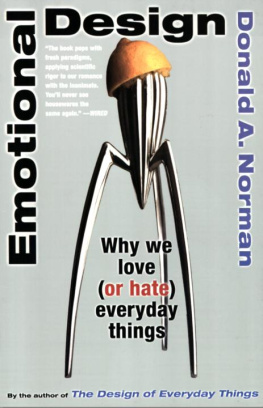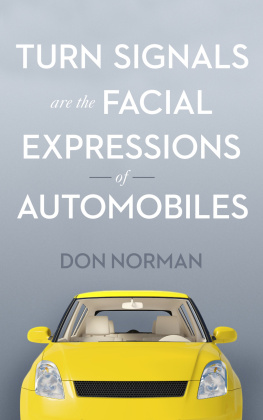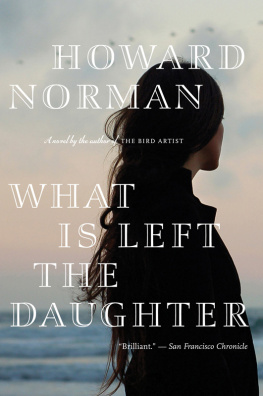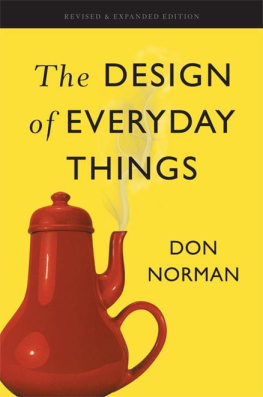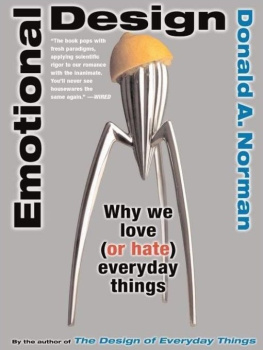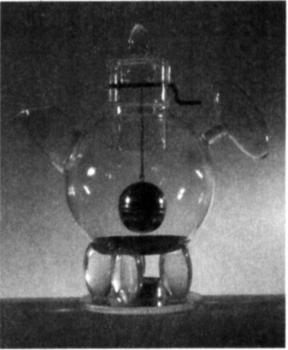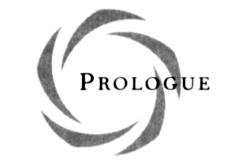Michael Graves's "Nanna" teapot.
So charming I couldn't resist it.
(Author's collection.
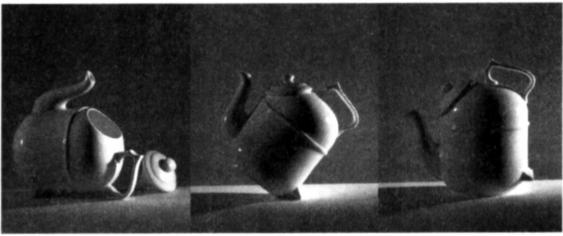
FIGURE 0.3a, b, and c
The Ronnefeldt "tilting" teapot. Put leaves on the internal shelf (not visible, but just above and parallel to the ridge that can be seen running around the body of the teapot), fill with hot water, and lay the teapot on its back (figure a). As the tea darkens, tilt the pot, as in figure b. Finally, when the tea is done, stand the teapot vertically as in figure c, so the water no longer touches the leaves and the brew does not become bitter.
(Author's collection Photographs by Ayman Shamma.)
Three Teapots
If you want a golden rule that will fit everybody, this is it: Have nothing in your houses that you do not know to be useful, or believe to be beautiful.
- William Morris
"The Beauty of Life," 1880
I HAVE A COLLECTION OF TEAPOTS One of them is completely unusable-the handle is on the same side as the spout. It was invented by the French artist Jacques Carelman, who called it a coffeepot: a "coffeepot for masochists." Mine is a copy of the original. A picture of it appears on the cover of my book The Design of Everyday Things.
The second item in my collection is the teapot called Nanna, whose unique squat and chubby nature is surprisingly appealing. The third is a complicated but practical "tilting" pot made by the German firm Ronnefeldt.
The Carelman pot is, by intent, impossible to use. The Nanna teapot, designed by the well-known architect and product designer Michael Graves, looks clumsy but actually works rather well. The tilting pot, which I discovered while enjoying high tea at the Four Seasons Hotel in Chicago, was designed with the different stages of tea brewing in mind. To use it, I place the tea leaves on a shelf (out of sight in the pot's interior) and lay the pot on its back while the leaves steep. As the brew approaches the desired strength, I prop the pot up at an angle, partially uncovering the tea leaves. When the tea is ready, I set the pot upright, so that the leaves are no longer in contact with the tea.
Which one of these teapots do I usually use? None of the above.
I drink tea every morning. At an early hour, efficiency comes first. So, upon awakening, I pad into my kitchen and push the button on a Japanese hot pot to boil water while I spoon cut tea leaves into a little metal brewing ball. I drop the ball into my cup, fill it with boiling water, wait a few minutes for it to steep, and my tea is ready to drink. Fast, efficient, easy to clean.
Why am I so attached to my teapots? Why do I keep them out on display, in the alcove formed by the kitchen window? Even when they are not in use, they are there, visible.
I value my teapots not only for their function for brewing tea, but because they are sculptural artwork. I love standing in front of the window, comparing the contrasting shapes, watching the play of light on the varied surfaces. When I'm entertaining guests or have time to spare, I brew my tea in the Nanna teapot for its charm or in the tilting pot for its cleverness. Design is important to me, but which design I choose depends on the occasion, the context, and above all, my mood. These objects are more than utilitarian. As art, they lighten up my day. Perhaps more important, each conveys a personal meaning: each has its own story. One reflects my past, my crusade against unusable objects. One reflects my future, my campaign for beauty. And the third represents a fascinating mixture of the functional and the charming.

